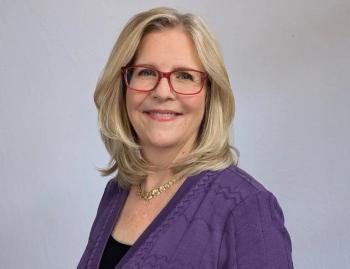
Future of Psychiatry in a Post-Pandemic World
In just 3 months, the virus has changed the lives of our psychiatric patients and of psychiatry forever. What are the next best steps?
COMMENTARY
The COVID-19 pandemic is the most disruptive force in psychiatry since the deinstitionalization movement of the 1960s and 1970s. In just 3 months, the virus has changed the lives of our psychiatric patients and of psychiatry even more than did the forced discharge of hundreds of thousands of patients that occurred over a period of 10 years. It was horrible, 50 years ago, watching the deterioration of prematurely discharged patients. Even worse now is the despair of watching tens of thousands of our patients dying avoidable pandemic deaths.
The several decades of neglect since deinstitutionalization have rendered people with severe mental illness (SMI) particularly vulnerable to catching the disease and to having severe cases. Current neglect in the US pandemic response makes them helpless sitting ducks, dying in droves.
Caught in death traps
Absent an unlikely miracle vaccine, I suspect the coronavirus will eventually spread throughout the country and cause great harm among most demographic groups. The worst hotspots and damage occur wherever people are forced to live or work in close quarters and in those who suffer from medical and/or economic disadvantage. Among all demographic groups, patients with SMI are perhaps the most vulnerable-both because of where they live and because of their pre-existing health problems.
Deinstitutionalization was haunted by a horrid paradox. Its original idealistic purpose-freeing neglected patients from crowded snake pits and providing them instead with decent housing and treatment in the community-was quickly abandoned in a mad rush to off-load public responsibility for the mentally ill. Money saved by closing state hospitals did not follow discharged patients into the community. Lacking adequate treatment and housing, patients dumped from the admittedly awful state hospitals were often subjected to much worse living arrangements in the community.
As society's neglect persisted through the ensuing decades, things have gotten progressively worse. Many patients now face the pandemic living in the most extraordinarily crowded of death traps-prisons, nursing homes, homeless shelters, group homes, hospitals, or on the street. In such settings, social distancing is impossible; hygiene is substandard; and exposure to the virus is inevitable.
Patients are also especially vulnerable because of the frequency and severity of their preexisting health problems. People with SMI died 20 years earlier than expected even before COVID-19-due to a combination of medical neglect; heavy smoking (which relieves symptoms and medication adverse effects); and high rates of obesity and diabetes (common medication adverse effects). It seems likely they will now have the highest rate of infection; the highest rate of transmission; and the highest rate of case mortality of any demographic group.
If, as I suspect, the total number of pandemic deaths in the US eventually reaches somewhere between one half and one million, more than a hundred thousand mentally ill patients may die mostly avoidable deaths.
The US response to the pandemic has been mismanaged in every way possible-particularly the lack of testing and contact tracing, as well as the callous neglect of high-risk groups. The federal government is
Advocacy for patients with SMI, always muted, has been even more unaccountably silent in the face of the current life-and-death emergency. There is constant media buzz on how best to help mentally healthy people face their understandable, but normal, anxieties about the pandemic and quarantine-but almost nothing has been said about our responsibility to save the lives of those at desperate risk. I am puzzled and disappointed by the indifference of some professional mental health organizations and patient advocacy groups that no longer advocate actively for the vulnerable patients who lack a voice and most need one.
Next steps
That the problems are so enormous is no excuse for ignoring them. We need a massive level of immediate support and housing for the homeless and for the additional army of people soon to become homeless (both because of the economic collapse and the rapid release of prisoners). We need extensive coronavirus testing, tracing, and contact isolation- especially in nursing homes, prisons, shelters, group homes, and for the homeless. Empty hotels should be converted to temporary housing to reduce crowding and allow separation of spreaders from the general population. We need federal and state funding for more psychiatric beds-ridiculously inadequate before the pandemic and now more necessary than ever to avoid over-crowding.
In a rational and compassionate world, the pandemic would be a much needed wake-up call warning us that we must end the shameful neglect of patients with SMI and other vulnerable and disadvantaged groups. There would be a new realization that investment in better services is not only the right thing to do but also the cost-effective thing. When we allow the virus to run wild among mentally ill patients, they become a reservoir for potential future reinfection of everyone else. The pandemic has highlighted, in the clearest and most tragic possible way, all the longstanding sufferings of people with SMI. The question now is whether this sharp societal shock treatment will result in long delayed societal regret and reform.
So far, sad to say, I detect no encouraging signs of a renewed social conscience stirring in our neglectful nation. And, adding to the gloom, federal and state governments will have very limited spending options during and after the pandemic. Balance sheets are in terrible shape because of all the lost revenue and the huge expenditures (often wasted) occasioned by pandemic.
It is still early days of the pandemic- so passively giving up hope is not an option. The virus has already killed well over 100,000 Americans in just over 2 months. As the toll rises inexorably in the coming year(s), our country may perhaps finally face the fact that economic and social policies have been badly skewed to promote inequality and ignore disadvantaged people. The next election will in large part be a referendum on national priorities. It will, or it will not, initiate the fundamental reforms needed to correct the grave and glaring inequalities and inequities of the current system. If the carnage of the pandemic does not at long last stimulate the national conscience, I can't imagine what will. And if not now, when?
Telemedicine: The wave of the future
The practice of medicine has always been greatly influenced by disruptive advances in transportation and communication technologies. Until 150 years ago, most medical care was delivered in the patient's home and doctors were pretty evenly distributed across the country. This changed rapidly with the availability of paved roads, railroads, telephones, public transportation, and cars-technologies that made it much easier and more cost effective for patients to get to doctors than for doctors to get to patients. Ease of travel and communication also made possible the growing cities that quickly absorbed most doctors.
Telemedicine is the latest disruptive communication technology to revolutionize medicine. It was first developed decades ago as a way to provide remote care in geographically isolated areas that suffered a shortage of doctors. Telepsychiatry pioneered telemedicine and before the pandemic constituted most of its practice. But remote care was, until a few months ago, just a small niche player in both medicine and psychiatry.
The pandemic has changed all that-suddenly causing the most dramatic change ever in how medical care is delivered. The dangers of face-to-face contact have now made telemedicine the main delivery mode for all nonessential medical care.3
Necessity being the mother of invention, long sacred impediments to telemedicine magically disappeared. Insurance companies now reimburse it; relaxed regulations make out-of-state practice possible; and convenient apps allow easy compliance with HIPAA privacy rules. It is not yet clear the degree to which these changes are temporary or permanent, but my guess is that this genie will never go back into the bottle.
The pandemic has made Americans much more dependent on, and comfortable with, screen vs face-to-face contact in their work and social lives. Many patients will likely prefer to continue the convenience of telemedicine rather than return to the inconvenience of travel to doctors’ offices and sitting in waiting rooms. The switch in psychiatry from office practice to telepsychiatry has been incredibly smooth and rapid. Telepsychiatry saves time; increases efficiency; allows much greater scheduling flexibility; permits patients a wider choice of clinicians; and gives clinicians access to a wider pool of patients. Clinicians who feared the loss of face-to-face intimacy find a positive tradeoff in the increased intimacy of seeing the patient in a home context and easy access to family members.
My guess is that telepsychiatry will eventually establish itself as the preferred mode of care for most patients with mild to moderate psychiatric problems. It is not optimal for severely ill patients who suffer from complex psychiatric, medical, social, and economic problems that require face-to-face contact. And there will be a significant minority of patients and clinicians who do not like, don't have access to, or can't use, screens-but this fraction will likely diminish over time.
The clinical practice of telepsychiatry is based on almost no research. We do know that patients and therapists express high satisfaction-and little else. Research funding should be quickly reallocated to allow for the systematic study of efficacy; indications; adverse effects; dropout rates; acceptance; and determination of direct and indirect costs and benefits.
Conclusions
The tragedy of coronavirus pandemic death among persons with SMI dwarfs even the tragedy of neglect that accompanied their deinstutionalization 50 years ago.4,5 If anything will ever serve as wake-up call to our sleeping collective conscience and drive us to reform, this is it. Too soon to tell, but the early signs do not inspire confidence. Furthermore, telepsychiatry is not just a temporary emergency response to the pandemic- it is the wave of the future. Clinicians and systems are well advised to reorganize their practice habits around it.
Disclosures:
Dr Frances is Professor Emeritus and former Chair, Department of Psychiatry, Duke University; Chair, DSM-IV Task Force. He is the author of
References:
1. Saxena S, Aquila R, People with serious mental illness tend to die prematurely. We can fix that. STAT. November 8, 2018. Accessed June 2, 2020.
2. National Association of State Mental Health Program Directors. COVID-19 Response CARES Act Includes $425 Million to Boost Mental Health and Substance Use Disorder Care in the Communities. Accessed June 2, 2020.
3. NYU Langone Health. Telemedicine transforms response to COVID-19 pandemic in disease epicenter. Science Daily. April 30, 2020. Accessed June 2, 2020.
4. Frances A. Repairing Our Broken Mental Health Care System: Advice for Policymakers. Psychiatric Times. January 7, 2020. Accessed June 2, 2020.
5. Twenge J. New study shows staggering effect of coronavirus pandemic on America’s mental health. The Conversation. May 7, 2020. Accessed June 1, 2020.
Newsletter
Receive trusted psychiatric news, expert analysis, and clinical insights — subscribe today to support your practice and your patients.














